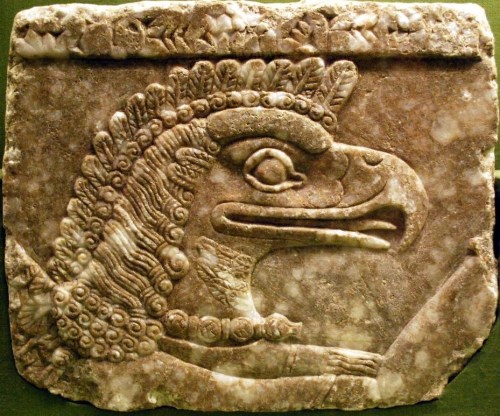On the Date of The Flood
“I now turn to Berossos’ account of the Flood as the central narrative of book 2. The extant fragments contain the following elements:
- – Kronos reveals the destruction of mankind in a dream
- – Xisouthros is told he must bury the tablets in Sippar
- – He must build a boat and embark together with family, friends, and animals
- – The coming and receding of the deluge (mentioned in only one sentence)
- – Bird scene
- – Disembarking
- – Worship and ritual offering
- – Disappearance of Xisouthros, who will henceforth live with the gods
- – Xisouthros’ friends and relatives are told (not by Kronos, but a ‘voice’) to go to Sippar and dig up the tablets, and to hand them over to mankind.
- – Landing place in Armenia, in the Korduaian mountains. The remains of the ark are still there, and people scrape off bitumen for magic purposes.
In Mesopotamian accounts of the deluge the Flood marks a break between a mythic prehistory and a history closer to the world as it is today. According to Manfried Dietrich, many mythical texts from Mesopotamia reflect this view of history, whereby an embryonic phase in the development of the world (‘embryonaler Status’) is followed by what he calls the ‘Jetzt-Zeit’, i.e. the present time.
The extant fragments of Berossos follow the same overall scheme. For Berossos too, the time before the Flood is a period of revelation, when the basis for all later knowledge was laid. Writings originating in this period would accordingly have a special authority and ‘the history which follows is the time when this revelation is transmitted and unfolded.’
Berossos was not the first to connect an antediluvian king list with the Flood story: already the Sumerian version of the Flood story mentions five primeval cities known also from copies of the Sumerian King List.

Among all the extant exemplars of the Sumerian King List, the Weld-Blundell prism in the Ashmolean Museum cuneiform collection represents the most extensive version as well as the most complete copy of the King List.
In this depiction, all four sides of the Sumerian King List prism are portrayed.
It lists rulers from the antediluvian dynasties to Suen-magir, the fourteenth ruler of the Isin dynasty (ca. 1763–1753 B.C.).
The prism contains four sides with two columns on each side. Perforated, the prism must originally have a wooden spindle going through its centre so that it might be rotated and read on all four sides.
http://cdli.ox.ac.uk/wiki/doku.php?id=the_sumerian_king_list_sklid=the_sumerian_king_list_skl
Berossos’ own knowledge of primordial kings probably goes back to sources that were available in Hellenistic times. The Sumerian King List itself was still known in the Seleucid era, or rather versions of king lists that echo, structurally and stylistically, their ancient forerunners from the early second millenium.
In matching up the primordial kings with the seven sages, the apkallu, Berossos once again works in the vein of contemporary scholars, who demonstrably constructed lists with kings and apkallu in order to advertise their own importance, and the primordial roots of their knowledge, as Alan Lenzi has recently shown (Editorial note: this link is to Alan Lenzi, “The Uruk List of Kings and Sages and Late Mesopotamian Scholarship,” JANER 8.2, 2008, which will be serialized in its own posts shortly).

Detail, apkallu head, from a frieze in Nimrud.
http://non-aliencreatures.wikia.com/wiki/Apkallu
Yet, Berossos does not merely translate ancient documents, but rather selects and reframes what he finds, thus constructing his own version of the past. For a start, he locates the beginnings of kingship in Babylon and not in Eridu as the first city of Mesopotamian tradition.
Moreover, he reckons the overall duration of pre-flood history at 432,000 years (120 saroi = 120 x 3600 years), a sum that reflects the sexagesimal counting system of ancient Mesopotamia but which, as far as we know, is unique in Mesoptamian tradition.
432,000, however, is no arbitrary accumulation of individual reigns, but rather represents an astronomical ‘great year’, or an exact fraction of it. A great year is the period of time it takes for all heavenly bodies to return to their original place in the sky.
Berossos evidently had at least some astronomical knowledge, and moreover was keen to display his knowledge. Indeed, another peculiarity of Babyloniaca 2, beside the exorbitant reigns of the pre-flood kings, is Berossos’ unusual and very specific reference to a date for the Flood:
Kronos stood over him in his sleep and said that on the 15th of the month of Daisios mankind would be destroyed by a flood.
The Armenian version (F4a) supplies some explanatory glosses inserted at a later stage (in italics):
He says that Kronos, whom they call the father of Aramazd and others call Time, revealed to him in his sleep that on the 15th of the month of De(s)ios, which is Mareri, mankind was to be destroyed by the Flood.
There is no mention of a specific date in cuneiform texts about the Flood, yet Berossos puts it on ‘the fifteenth of the month Daisios’. According to the Macedonian calendar introduced by the Seleucids, Daisios is the 8th month of the year, and comes in spring (April/May, Babylonian Ayyaru).
Perhaps Berossos inserted a Macedonian dating in order to make it more relevant to his readers who were familiar with Greek Flood narratives. The choice of date may not be entirely accidental, as the Tigris and the Euphrates burst their banks in spring.
However, extant cuneiform sources link the deluge with rains and a cosmic storm rather than natural inundations, and we may have to look elsewhere for an explanation.”
Martin Lang, “Book Two: Mesopotamian Early History and the Flood Story,” from Johannes Haubold, Giovanni B. Lanfranchi, Robert Rollinger, John Steele (eds.), The World of Berossos, Proceedings of the 4th International Colloquium on the Ancient Near East Between Classical and Ancient Oriental Traditions, Harrassowitz Verlag, Wiesbaden, 2013, pp. 49-51.

